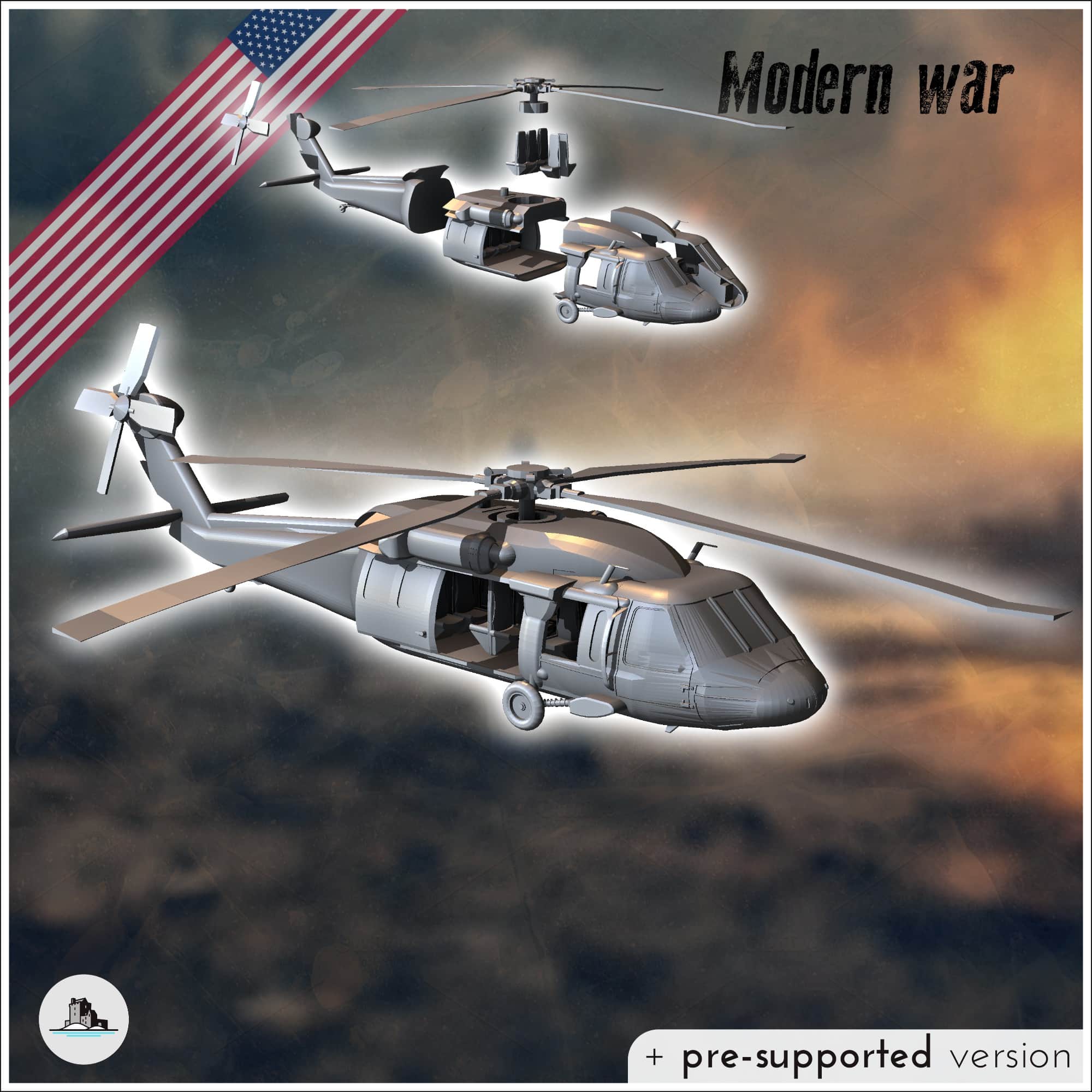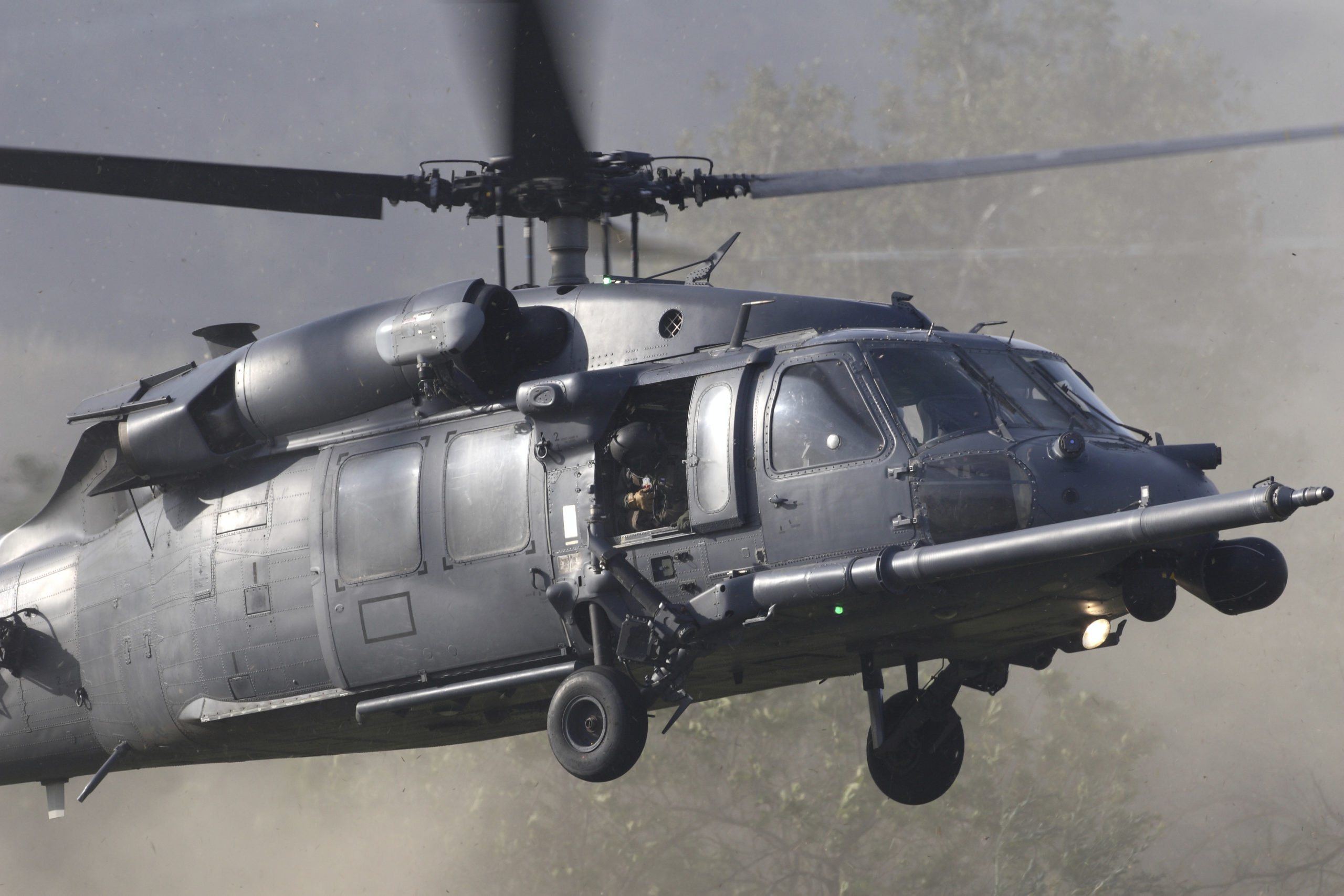Checking Out the History and Advancement of the UH 60 Helicopter

Origins of the UH-60
The beginnings of the UH-60 helicopter can be mapped back to the late 1960s, a duration noted by the demand for a versatile utility aircraft that might adapt to the progressing demands of modern warfare. The U.S. Army acknowledged the need for a substitute for the older UH-1 Iroquois, which was becoming significantly poor for the intricacies of modern fight circumstances. In 1967, the Army started the Energy Tactical Transportation Aircraft System (UTTAS) program, which looked for to develop a multi-role helicopter efficient in different objectives, consisting of troop transport, medical evacuation, and logistical support.
The UH-60 Black Hawk was presented, showcasing innovative design aspects and advanced modern technology that established it apart from its precursors. The UH-60 quickly got acknowledgment for its durable performance, dependability, and versatility, paving the way for its considerable use in armed forces procedures and solidifying its standing as a foundation of United state Army aeronautics.
Key Layout Features
Cutting-edge design attributes of the UH-60 Black Hawk dramatically contribute to its operational efficiency. One of the most remarkable aspects is its twin-engine arrangement, which improves integrity and provides a greater power-to-weight ratio, making it possible for the helicopter to perform under different conditions. The aircraft's four-blade primary blades system supplies improved lift and ability to move, essential for tactical goals.

Furthermore, the cabin is made for optimum exposure and ergonomics, including innovative avionics that simplify pilot operations. The modular layout of the UH-60 enables for simple upkeep and versatility, making it suitable for different goal accounts, from troop transportation to medevac procedures. These essential style functions guarantee that the UH-60 Black Hawk continues to be a versatile and dependable possession in army air travel, efficient in fulfilling the demands of contemporary warfare.
Technical Improvements
Current technological advancements in the UH-60 Black Hawk have actually considerably improved its functional capacities and versatility. The assimilation of innovative avionics, such as digital flight control systems and improved situational understanding display screens, permits pilots to operate with enhanced precision and performance. These systems facilitate improved navigation, communication, and information sharing, enabling the helicopter to operate successfully in varied settings.
Additionally, the intro of composite materials has decreased the general weight of the airplane while keeping structural stability. This reduction improves fuel effectiveness and expands functional array. The unification of innovative rotor technology, including the use of four-blade, fully expressed blades systems, has actually enhanced lift performance and maneuverability, enabling much better handling in different flight conditions.

Moreover, improvements in propulsion systems, such as the T700-GE-701D engines, have actually enhanced power output and reliability - uh 60. These engines add to premium efficiency in hot-weather and high-altitude conditions
Lastly, the combination of self-defense systems and boosted sensor packages boosts the Black Hawk's survivability and objective effectiveness. Collectively, these technical enhancements ensure that the UH-60 Black Hawk great site continues to be a vital property in contemporary aviation, qualified of adapting to the developing needs of armed forces and humanitarian missions.
Duty in Military Procedures
As the backbone of united state Army aviation, the UH-60 helicopter plays a critical duty in numerous army operations, working as a flexible system for battle support, transport, and medevac missions - uh 60. Its style incorporates the ability to operate in varied environments, making it essential for troop motion and logistical support in both unique and standard war

In medical evacuation circumstances, the UH-60 has confirmed very useful, dramatically lowering the time to transfer wounded soldiers from the battleground to medical centers. Its innovative avionics and evening vision abilities further make certain objective success under challenging problems. Generally, the UH-60 helicopter remains a vital asset, continuously adapting to satisfy the developing demands of military procedures and enhancing the effectiveness of united state pressures worldwide.
Future of the UH-60
Looking in advance, the future of the UH-60 helicopter entails significant advancements in technology and abilities designed to improve its functional efficiency. As army operations advance, the UH-60 is expected to incorporate cutting-edge modern technologies, including enhanced avionics, boosted tools systems, and advanced interaction tools. These enhancements will allow for higher situational awareness and objective flexibility, guaranteeing that the UH-60 remains a crucial property on the battleground.
One remarkable development is the integration of fly-by-wire systems, which will certainly boost flight control precision and minimize pilot workload. Initiatives to update the airframe and engines aim to enhance payload, array, and speed ability, thus expanding the helicopter's operational scope.
The future additionally holds guarantee for raised interoperability with unmanned aerial systems (UAS), enabling coordinated missions that leverage both manned and unmanned capabilities. In addition, the unification of man-made knowledge and machine discovering might optimize trip characteristics and upkeep processes, bring about decreased operational expenses.
Verdict
The UH-60 Black Hawk helicopter represents a significant success in armed forces aviation, progressing from the united state Military's preliminary needs for a versatile utility airplane. Its ingenious layout functions and continuous technological advancements have actually guaranteed its importance in different armed forces procedures over the years. As the demands of modern-day war modification, the future of the UH-60 will likely entail additional enhancements and adjustments, enhancing its standing as an important possession for armed forces worldwide.
The UH-60 Black Hawk helicopter represents a substantial landmark in army aeronautics, arising from the United state Military's pursuit for a much more flexible and dependable energy aircraft in the late 20th century.The origins of the UH-60 helicopter can be traced back to additional info the late 1960s, a duration noted by the requirement for a versatile energy airplane that could adapt to the evolving needs of modern war. In general, the UH-60 helicopter continues to be a crucial possession, constantly adjusting to fulfill the evolving demands of armed forces procedures and enhancing the efficiency of U.S. pressures worldwide.
Looking ahead, the future of the UH-60 helicopter includes considerable advancements in innovation and capabilities designed to enhance its operational performance.The UH-60 Black Hawk helicopter stands for a considerable accomplishment in armed forces aeronautics, evolving from the U.S. Military's preliminary demands for a flexible energy airplane.